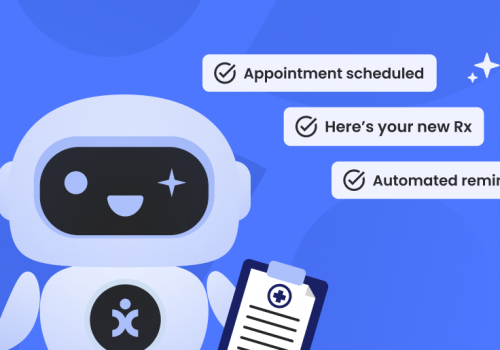Customer-Centric Customer Service Strategy. A Guide To Building Customer-Centric Customer Service Scripts That Grow Profits By Maximizing Cashflow Efficiency
Most businesses (up to 85%) focus intensely on customer acquisition over customer retention despite its relatively small comparative impact on profits. Notably, the cost of acquiring a single customer is approximately five times the cost of reengaging an existing customer, and the cost of cultivating a lifetime relationship with a new customer is sixteen times the cost of maintaining a good relationship with an already-reengaged customer. Given the high cost of new customer acquisition and relationship-building, logic dictates that businesses should reap proportionately larger profits from these activities than other less expensive practices. This, however, is not the case. Consequently, companies failing to implement a customer-centric customer service and relationship management strategy are not cash-efficient, nor do they capture their greatest potential profits.
The Problem With Acquisition-Focused Customer Service & Relationship Management
The lifetime value of a retained customer who goes on to become a “customer experience promoter” (that is, they are satisfied with their service experience and recommend the brand to peers) is at least 600% — and as much as 1400% — greater than the value of a one-time customer. The result of firms’ disproportionate focus on acquisition is that the average firm retains just 20% of its customers by using less than half of its customer service and relationship management budgets. These retained customers are nevertheless responsible for 80% of the firm’s profits.
What’s more, more than 82% of firms acknowledge that customer retention is both less expensive and more profitable than new customer acquisition. Yet less than half of companies invest in the necessary tools to measure lifetime customer value, and less than 15% of companies intentionally spend more on retention than acquisition.
What Is Customer-Centric Customer Service?
Customer-centric customer service goes by many different names; it is sometimes called “strategic customer service,” “concierge customer service,” the “flywheel framework,” or even “growth marketing.” Consequently, its conceptual origins are traceable to any number of different sources, depending on the vocabulary used to describe it. Regardless of the name applied to it (or who, precisely, thought of it first), all these terms describe the same increasingly popular trend in customer support and customer relationship management.
This trend prioritizes maximizing per-customer profits, rather than market share capture, as the natural outcome of customer service processes. While this may seem like a common-sense focus, few corporations are naturally obsessively focused on gathering and analyzing data about the efficacy of their customer relationship management spend. Moreover, fewer still are committed to continuously micro-adjusting customer relationship management processes in response to that data. This obsessive focus and micro-adjustment process are the defining characteristics of customer-centric customer service.
Maximizing Market Share Capture vs Per-Customer Profits
Traditional customer service and relationship management practices treat market share capture as the primary outcome of all customer service investments and outcomes. That is, they aim to increase the total percentage of customers served from a specific, desired consumer market. While increased customer retention is a passive benefit of creating more satisfying customer service processes, it is not the central goal of traditional customer relationship management activities. Instead, new customer acquisition (increasing conversion rates while decreasing bounce) is the most intentional goal of CSA training, customer service channel creation, and all other customer service processes.
Conversely, customer-centric customer service requires firms to move away from traditional funnel-based customer engagement practices by recognizing the ways that the needs of the individual customer drive the explicitly measurable success of unique service interactions as well as that of the business as a whole. As a result, participating firms restructure their marketing, sales, and customer service practices to create a framework that places understanding and responding to customer needs at the center of all processes, rather than at the end of the funnel. This empowers participating businesses to actively leverage the profitability of each customer relationship rather than merely sitting back and reaping the passive benefits of providing satisfactory customer service.
The Importance Of Data In Customer-Centric Customer Service
Moreover, customer-centric customer service prioritizes the use of concrete data about customer churn, retention, and referral rates (including net promoter score) to inform firms’ proactive decisions about customer service processes development and provision planning. This promises to make firms’ customer service ROI more easily and explicitly measurable. This is because intentional investments in and improvements to customer service agent (CSA) training and both full- and self-service customer support channels visibly and directly impact (and increase) the total lifetime spend of customers. This empowers firms to reallocate customer service spending so that different customer segments receive incrementally greater or lesser engagement investments proportionate to their anticipated lifetime value to the firm. Consequently, firms that correctly implement a customer-centric customer service model are extremely cash-efficient.
What Are The Benefits/Outcomes Of A Customer-Centric Customer Service Strategy?
Customer centricity involves far more than just providing satisfying customer service interactions; it is about aligning the products/services with the needs of the customer in order to maximize profits. Customer retention and transformation into “customer experience promoters” are the primary vehicles driving profits under this model. Consequently, the benefits of customer-centric customer service and relationship management are uniquely quantifiable.
Increases Customer Retention Rate, Reduces Churn – The core measurable outcome of customer centricity is improved customer retention. That is because firms focus on customer needs and continuously make data-driven improvements to service processes, increasing satisfaction.
Increases Customer Satisfaction & Net Reporter Score – Two crucial under-utilized performance metrics, customer satisfaction and net reporter score, improve under customer-centric models. This is because firms fine-fine service processes to best meet (and anticipate) customers’ changing needs.
Increases Social Proof While Decreasing Acquisition Costs & Activity – Creating highly satisfying customer service experiences transforms customers into promoters who recommend and review the brand. This attracts new customers more effectively/efficiently than traditional acquisition-focused spending practices.
Increases Average Customer Lifetime Value – Lifetime spend increases proportionately to retention and satisfaction. The longer the relationship with a customer lasts, the less it costs to re-engage them, and the more they spend.
Increases Revenue While Decreasing Costs, Ultimately Maximizing Profits – The combined impact of these outcomes is that the costs of sales decrease while the frequency and size of sales increases. Consequently, firms make more revenue and keep more profits.
4 Essential Steps For Developing A Customer Centric Approach To Customer Service
Too often, customer service develops as an organizational afterthought. Restructuring customer service strategy so that all behaviors are driven by and effectively reduce the friction in customer-centric activities is not a simple task, especially for established firms with pre-existing traditional funnel structures. The critical steps for creating customer centricity are:
1. Develop a single view of the customer.
It is not enough to just acknowledge that each customer is unique. Instead, companies hoping to develop effective customer-centric customer service strategies must gain a single view of each customer that is accessible across the company. Consequently, firms must have an interconnected customer service environment. 70% of customers find seamless, cross-connected customer service channels, including those that enable CSAs to demonstrate knowledge of the services they have experienced and their purchase history, are essential to service experience satisfaction. The bottom line is, customer-centric customer service requires an ongoing individualized understanding of a customer’s relationship with the brand.
2. Identify the real, quantifiable value associated with acquiring vs. retaining customers and realign/redistribute resources so that they are proportionate to customer impacts on profits.
Firms following traditional acquisition-focused customer service strategies focus on net promoter score (NPS) as a measure of the number of customer experience detractors. While this information is not useless, it has a smaller impact on profit generation than the number of retained customers that become customer experience promoters due to the firm’s customer service actions. Companies that leverage data to “fix” problems identified by detractors ultimately invest in the least efficient direction. Instead, firms should leverage data on NPS and customer lifetime value to understand which practices create customer experience promoters and what behaviors effectively increase lifetime spend.
3. Identify the real, quantifiable value associated with individual customers and design customer service interactions to move each one towards retention, reengagement, and repurchasing.
Once firms better understand NPS and learn how to measure customer lifetime value (less than half of companies currently know how), creating customer-centric customer service processes becomes a matter of visualizing customers’ sales journey as a life-long relationship rather than a singular event. As a result, companies pursuing a customer-centric customer service strategy can work to identify important milestones in long-term customer relationships as well as effective service catalysts and re-engagement campaigns that prompt repurchasing and increase order values. Under a customer-centric customer service strategy, customer service interactions become natural opportunities for upselling and cross-selling for mutual success.
4. Appropriately segment customers and design segmented automated customer service processes.
Customer centricity empowers firms to create different segmentation rules and procedures that are wholly unlike the automated, segmented processes designed as a part of a more acquisition-focused strategy. Good customer-centric segmentation rules often delineate between spending tiers for retained customers, ensuring that behaviors, services, and campaigns that require more significant upfront financial investment from the firm target the highest-spending customers. This ensures that customer service spend generates the highest revenue per dollar possible. Moreover, customer-centric segmentation also involves segmenting customers based on what they actually want and need from the firm, minimizing wasted investment into poorly fitted service offerings.

How To Use Technology For Customer-Centric Customer Service
Technology — both separate tools and unified platforms — can inform firms’ creation of high-quality customer-centric customer service strategy. For example, using disparate tools like social media and website analytics, companies can gain significantly greater insights about both what their customers need and what their competitors are doing (both right and wrong). This is especially important considering that less than 5% of businesses make the best use of the data already available to them through their existing customer service and engagement channels.
Additionally, the use of centralized customer service and customer relationship management platforms can dramatically improve companies’ efforts to create customer-centric customer service practices. This is because such platforms often facilitate enhanced CSA training as well as improved customer-to-CSA dialogue, CSA-to-CSA dialogue, and CSA-to-management dialogue, all of which are empirically linked to improved customer-centric performance. Moreover, customer self-service channels created through such platforms, as well as persistent conversation records and automated expectations management tools ensure that customers’ needs remain the constant focus of both human- and mechanical-customer service behaviors. As a final beneficial tool, centralized customer service platforms often facilitate easy upselling and cross-selling within self-service and other customer support channels, which is both made easier by and supports maintaining a customer-centric customer service strategy.
How CommBox Can Help Companies Develop And Maintain A Customer Centric Strategy
Omni-channel customer service platforms are one of the most effective tools for creating and maintaining a high-quality customer-centric customer support environment. As an industry-leading omni-channel customer service tool, CommBox provides its business customers with secure, intuitive access to the technology most significantly linked to customer-centric customer support success.
Additionally, CommBox’s practice of streamlining service channels and points of customer contact into one easy-access dashboard empowers CSAs and AI chatbots to align live customer service with individual customers’ needs. Moreover, CommBox’s automated, procedurally generated data collection and analysis easily inform the kind of continuous micro-adjustments necessary for maintaining customer centricity over time. Contact us today to find out more about how CommBox can help your business create and maintain a high-quality customer-centric customer support strategy.




















